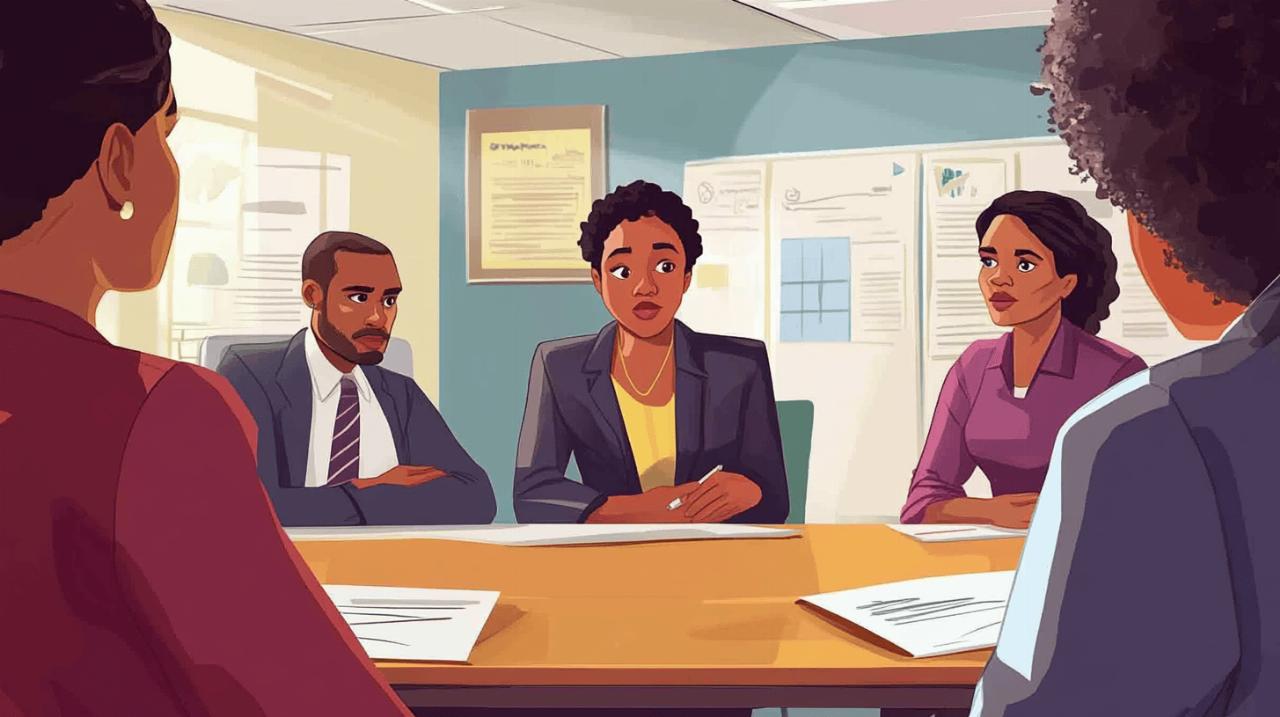Experiencing bullying or sexual harassment in the workplace or educational environment is a distressing situation that no one should have to endure. Understanding the legal framework that protects you, knowing how to document incidents properly, and being aware of the procedures available to seek justice are crucial steps in reclaiming your dignity and ensuring accountability. This guide provides comprehensive information on your rights, the processes involved in filing a complaint, and the vital support that trade unions and specialist services can offer to those affected by workplace harassment.
Understanding your legal rights and protections against workplace harassment
Statutory Rights Under UK Employment Law and the Equality Act 2010
In the United Kingdom, the law provides robust protections against bullying and sexual harassment through various pieces of legislation, most notably the Equality Act 2010. This act consolidates previous anti-discrimination laws and clearly defines harassment as unwanted conduct related to a protected characteristic that violates someone's dignity or creates an intimidating, hostile, degrading, humiliating, or offensive environment. Sexual harassment specifically includes unwanted conduct of a sexual nature, or conduct related to gender or sex that has the same effect. The law recognises that such behaviour not only harms the individual but also undermines workplace morale and productivity. Employment tribunals have the authority to hear claims and award compensation for distress, injury to feelings, and financial losses resulting from harassment. Claims must typically be made within three months minus one day from the most recent incident, emphasising the importance of acting promptly when seeking formal redress. Even in cases where evidence is limited, tribunals may uphold a complaint if they find the complainant's account credible and compelling.
Your Employer's Duty of Care and Obligations to Provide a Safe Environment
Employers carry a legal duty of care to ensure that all staff work in an environment free from harassment and discrimination. This responsibility extends beyond merely reacting to complaints; organisations are expected to take proactive measures to prevent harassment from occurring in the first place. Tribunals will scrutinise the steps an employer has taken to create a safe workplace, including the implementation of clear policies, regular training for staff and managers, and the establishment of effective grievance procedures. Employers must handle all complaints seriously, sensitively, and promptly, regardless of whether they are raised informally or through formal channels. Confidentiality must be maintained throughout the process to protect both the complainant and the accused, and support should be offered to all parties involved. Failure to meet these obligations can result in the employer being held vicariously liable for the actions of their employees, potentially leading to significant compensation awards and reputational damage.
Documenting evidence and building your harassment complaint case
Creating a Detailed Written Record of Incidents, Dates, and Witnesses
One of the most critical steps in preparing to file a complaint is to meticulously document every incident of bullying or sexual harassment as it occurs. This record should include the date and time of each event, a detailed description of what happened, the location, the names of the perpetrator and any witnesses, and how the incident made you feel or affected your work. Keeping a contemporaneous log of events strengthens your case considerably, as it provides a factual and chronological account that can be referred to during investigations or tribunal proceedings. Even seemingly minor incidents should be noted, as patterns of behaviour often emerge over time and can demonstrate a sustained campaign of harassment. This documentation serves as your primary evidence and can be invaluable in establishing the credibility of your complaint, particularly in situations where there may be little physical evidence or where the harassment occurs in private settings.
Gathering Supporting Documentation and Correspondence for Your Claim
In addition to your personal written record, it is essential to gather any supporting documentation that corroborates your account. This may include emails, text messages, or other forms of correspondence that contain inappropriate comments or unwanted advances. Screenshots of social media posts, voicemails, or notes can also be relevant. If you have shared your concerns with colleagues, supervisors, or human resources before formally complaining, keep copies of those communications as well. Medical records or notes from a general practitioner detailing the impact on your physical or mental health can further substantiate your claim, demonstrating the tangible harm caused by the harassment. Organising this evidence clearly and systematically will assist both your employer during their investigation and any legal representative you may engage, ensuring that your case is presented as compellingly as possible.
Step-by-Step Procedures for Filing Formal Complaints and Seeking Justice
Internal Company Grievance Procedures and When to Report to the Police
 Before taking legal action, it is generally advisable to follow your employer's internal grievance procedures, which should be outlined in the employee handbook or code of conduct. Most organisations have specific policies addressing bullying and sexual harassment, detailing how to raise a complaint and what steps will be taken to investigate. You may initially choose to resolve the matter informally through discussion with the harasser or a manager, though this approach is typically only suitable for less serious cases. For more serious incidents, a formal written grievance is necessary. This should clearly state what happened, who was involved, and how it has affected you, sticking to the facts and avoiding overly emotional language. Your employer is then obligated to conduct a fair and impartial investigation, which may involve interviewing witnesses and reviewing evidence. If the harassment constitutes a criminal offence, such as sexual assault or threats of violence, you have the right to report the matter to the police. Your employer should support you in making this report, though the decision ultimately rests with you. In cases where there is an ongoing risk to others, your employer may need to notify the police themselves.
Before taking legal action, it is generally advisable to follow your employer's internal grievance procedures, which should be outlined in the employee handbook or code of conduct. Most organisations have specific policies addressing bullying and sexual harassment, detailing how to raise a complaint and what steps will be taken to investigate. You may initially choose to resolve the matter informally through discussion with the harasser or a manager, though this approach is typically only suitable for less serious cases. For more serious incidents, a formal written grievance is necessary. This should clearly state what happened, who was involved, and how it has affected you, sticking to the facts and avoiding overly emotional language. Your employer is then obligated to conduct a fair and impartial investigation, which may involve interviewing witnesses and reviewing evidence. If the harassment constitutes a criminal offence, such as sexual assault or threats of violence, you have the right to report the matter to the police. Your employer should support you in making this report, though the decision ultimately rests with you. In cases where there is an ongoing risk to others, your employer may need to notify the police themselves.
Taking Your Case to Employment Tribunal and Understanding Compensation Claims
If your employer fails to address your complaint adequately or if you suffer detriment as a result of raising the issue, you may have grounds to bring a claim to an employment tribunal. This route is available for claims of harassment, discrimination, or constructive dismissal if you felt compelled to resign due to the ongoing harassment. The tribunal process involves submitting a claim form detailing your case, followed by a hearing where both sides present evidence and witnesses. It is highly advisable to seek legal advice from a solicitor or barrister specialising in employment law before proceeding, as the process can be complex and daunting. Compensation awarded by tribunals can cover financial losses such as lost wages, as well as injury to feelings, which acknowledges the emotional distress caused. The tribunal will also consider whether your employer took reasonable steps to prevent the harassment, which can significantly influence the outcome. Free early conciliation through Acas is available and often mandatory before lodging a tribunal claim, providing an opportunity to resolve the dispute without a formal hearing.
How trade unions and support services champion harassment victims
The Role of Trade Union Representatives in Advocating for Your Rights
Trade unions play an indispensable role in supporting workers who experience bullying or sexual harassment. If you are a union member, you have the right to be accompanied by a trade union representative during grievance meetings and disciplinary hearings. These representatives are trained to advocate on your behalf, ensuring that procedures are followed correctly and that your voice is heard clearly. They can help you draft your written complaint, advise on the strength of your case, and challenge any unfair treatment by your employer. Unions often have access to legal expertise and can arrange for a solicitor to represent you if your case proceeds to an employment tribunal. Beyond individual cases, trade unions work collectively to negotiate stronger workplace policies, deliver training on harassment prevention, and campaign for legislative improvements that protect all workers. Their presence in the workplace acts as a deterrent to potential perpetrators and reassures victims that they are not alone in seeking justice.
Accessing legal advice, counselling services, and support networks
Navigating the aftermath of harassment can be overwhelming, and it is vital to access the full range of support services available. In addition to trade union assistance, organisations such as Acas provide free guidance on workplace rights and can facilitate mediation between you and your employer. Specialist charities and helplines offer confidential advice tailored to victims of sexual harassment and can connect you with counselling services to help you cope with the emotional toll. Your general practitioner can also refer you to mental health support if the harassment has affected your wellbeing. Legal advice is crucial if you are considering formal action, and many solicitors offer initial consultations at no cost. Some trade unions and charities provide access to legal representation on a pro bono basis for those who cannot afford it. Building a network of support around you, whether through friends, family, colleagues, or professional advocates, is essential in maintaining your resilience and determination throughout the complaint process. Remember that you have every right to a safe and respectful environment, and numerous resources exist to help you achieve that.


